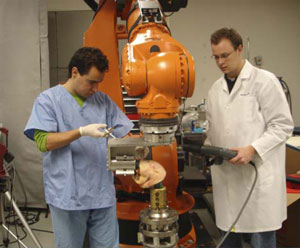All-Inside Arthroscopy ACL Reconstruction Technique

The Anterior Cruciate Ligament (ACL) is a main stabilizer in the human knee joint. The incidence of ACL injury in the United States alone is estimated to be 1 in 3000 individuals per year and surgical reconstruction is usually required in over 100,000 patients to restore normal knee function and stability.
When performing an ACL reconstruction, many factors should be taken into account to restore the anatomy and biomechanics of the normal ACL. ACL reconstruction using the semitendinosis and gracilis hamstring tendons has recently received attention because it offers advantages compared to the patellar tendon in terms of reducing quadriceps weakness, extension deficits, and anterior knee pain. However, there are still issues associated with the donor site including muscular weakness that directly impacts knee function and stability. Such problems would be detrimental to athletic performance. Therefore, it would be desirable to preserve as much of the hamstrings tendon as possible during ACL reconstruction, particularly for young and athletic patients.
Recently, Professor Giuliano Cerulli from the University of Perugia and Let People Move-Italy, has developed the All-Inside Technique. In this technique, two tunnels (one femoral and one tibial) are drilled manually with a special device halfway through the bone, allowing the use of only one hamstring tendon (gracilis or semitendinosis). In collaboration with Dr. Giuliano Cerulli and Dr. Claude Senni, Innovazione Medica and LARS Company, human cadaveric knees were tested at the MSRC to assess the effectiveness of this technique.
Using a robotic/universal force moment sensor (UFS) testing system, under the direction of Dr. Woo, Dr. Giovanni Zamarra and Mr. Matthew Fisher, it was found that the “All-inside” technique using either the semitendinosus or gracilis tendon for ACL reconstruction could satisfactorily restore knee kinematics under both anterior tibial and rotatory loading. These data also compared favorably to published results from our research center using both hamstrings as a quadruple tendon autograft. These results in human cadaveric knees confirm clinical findings that the “All-inside” procedure using only the single semitendinosus or single gracilis tendon graft for ACL reconstruction to be sufficient as well as effective in restoring initial knee stability to the levels of the intact ACL.
